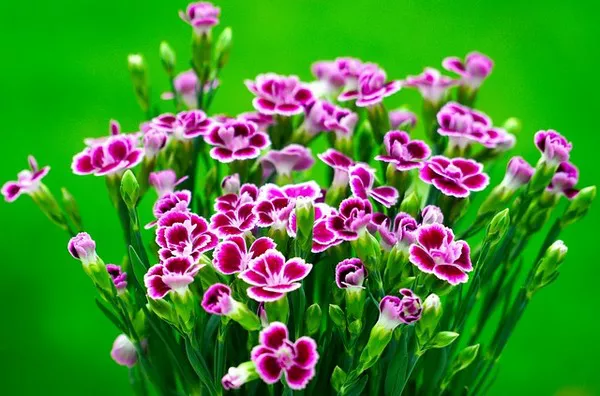Flowers have been an enduring symbol of beauty, love, and celebration throughout human history. Whether used to convey affection, celebrate milestones, or simply brighten up a room, a bouquet of flowers has the power to evoke emotions and add a touch of elegance to any occasion. However, for those contemplating the purchase of a bouquet, a common question arises: how much does a bouquet of flowers cost? In this article, we will delve into the factors that influence the price of a bouquet of flowers, from the types of flowers used to the occasion and season, helping you make informed choices when selecting the perfect floral arrangement.
Types of Flowers
The first and most significant factor that affects the cost of a bouquet of flowers is the type of flowers used. There is an extensive variety of flowers to choose from, each with its own price point. Common flowers like roses, carnations, and daisies are generally more affordable than exotic or rare blooms such as orchids, peonies, or lilies. The rarity, availability, and labor required to cultivate and handle certain flowers can significantly impact their cost.
For instance, red roses, often associated with love and romance, are among the most popular flowers and therefore relatively affordable. On the other hand, flowers like orchids, which are admired for their exotic beauty, tend to be more expensive due to their scarcity and delicate nature. When deciding on a bouquet, it’s essential to consider the recipient’s preferences, the occasion, and your budget.
Bouquet Size and Complexity
The size and complexity of a bouquet also play a crucial role in determining its cost. A small, simple bouquet with just a few flowers and minimal greenery will naturally be less expensive than a large, elaborate arrangement with a diverse selection of blooms, intricate designs, and added decorative elements like ribbons or crystals.
If you are on a budget, opting for a smaller, more straightforward bouquet can still convey your sentiments effectively without breaking the bank. Conversely, for special occasions that demand a grand gesture, investing in a larger, more complex bouquet can be a worthwhile decision, as it can create a lasting impression.
Seasonal Variability
Flower prices can fluctuate depending on the season. Flowers that are in season tend to be more readily available and, therefore, more affordable. In contrast, out-of-season flowers may need to be imported or grown in controlled environments, which can significantly increase their cost.
For example, tulips are generally less expensive in the spring when they are in season but can be pricier during the off-season when they need to be imported. Being aware of the seasonal availability of your preferred flowers can help you plan your bouquet purchase more cost-effectively.
Occasion and Flower Arrangement Style
The occasion for which you are purchasing the bouquet can also influence its cost. Wedding bouquets, for instance, are often more elaborate and customized to match the wedding theme, making them more expensive than a standard bouquet for everyday gifting. Funeral flowers, while usually simpler in design, may also have specific requirements and guidelines that affect their price.
Furthermore, the style of the flower arrangement can impact the cost. Hand-tied bouquets, for instance, tend to be more expensive due to the skill required to create them, whereas vase arrangements may be more affordable since they typically require fewer flowers.
Florist Expertise and Reputation
The reputation and expertise of the florist you choose can also affect the cost of your bouquet. Established florists with a strong track record and a reputation for quality may charge higher prices for their arrangements. However, this often comes with the assurance of receiving a well-crafted, visually stunning bouquet.
On the other hand, newer or less-known florists may offer more competitive prices to attract customers. It’s essential to strike a balance between your budget and your expectations when selecting a florist. Reading reviews and seeking recommendations can help you find a florist who provides value for your money.
Geographic Location
The cost of a bouquet of flowers can vary significantly depending on your geographic location. In urban areas and major cities, where overhead costs for florists are typically higher, you may find that bouquets are more expensive compared to rural areas. Additionally, regional factors such as climate and availability of certain flowers can influence prices.
If you live in an area with a high cost of living, consider exploring nearby regions or online options to potentially find more affordable bouquets while still ensuring quality and freshness.
Additional Costs
When calculating the cost of a bouquet of flowers, it’s essential to consider any additional costs that may apply. These can include delivery fees, taxes, and any extra services or add-ons, such as a personalized message card or a decorative vase. While these costs may seem minor, they can add up, so it’s wise to inquire about them when placing your order.
Conclusion
The cost of a bouquet of flowers can vary widely based on several factors, including the type of flowers, bouquet size and complexity, seasonal availability, occasion, florist expertise, geographic location, and additional costs. By understanding these factors and carefully considering your budget and preferences, you can make an informed decision when selecting the perfect bouquet for any occasion. Remember that while price is a consideration, the sentiment and joy that a beautifully arranged bouquet of flowers can bring are truly priceless.


